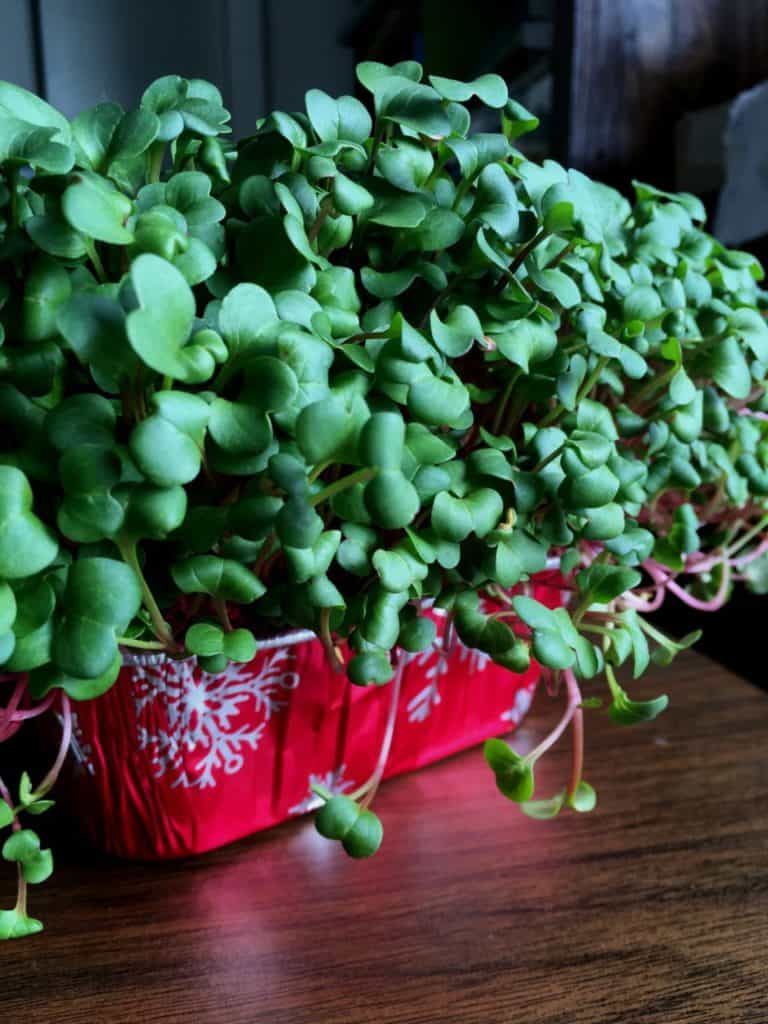
By Bonnie Kirn Donahue, Extension Master Gardener, University of Vermont
Are you missing the fresh greens of summer? During the winter, our options for fresh, homegrown veggies can be limited.
One great option for eating fresh greens year-round may be your local farm stand. Many local farmers use creative methods to grow a variety of leafy greens throughout the cold winter.
Another idea is to try growing something green yourself. With only seeds, potting soil, a recycled container and a windowsill, you can grow fresh, miniature greens, often referred to as microgreens or shoots, which will add a summer-like brightness to your meals.
What are shoots? Shoots are young seedlings that can be harvested just after the cotyledon or first true leaves have developed. They can be grown at a high density and are ready to eat within a week or two after sprouting.
You can grow many types of shoots: radish, buckwheat, peas, popcorn and nasturtium, among others. Seeds for shoots are available through seed companies or at your local garden center. Just make sure that the seeds you buy are intended for this purpose. Not all seeds or plants are edible, so do your research before starting.
First, measure out enough seeds to evenly cover the surface of your container in one layer. I use about two tablespoons of seeds for a 7- x 9-inch container. Clean, plastic 4 oz. lettuce containers work well for this. Soak your seeds for 6-24 hours in cold water, enough to keep the seeds well covered.
Next, prepare the growing medium. Add moistened potting soil to the container to a depth about a fingertip below the container’s edge. Strain the seeds and rinse, then lay them in an even layer on the surface of the soil.
Cover the container with a lightweight plastic tray, folded newspaper or cardboard. Place in a warm, dark place. Make sure to check the soil moisture periodically, and add water if it feels dry to the touch.
After about three to five days, the shoots will be a couple of inches high and will push up your lightweight cover. You can now remove the covering.
Place the container in a well-lit spot, such as a windowsill. Check daily, and water if the soil is dry to the touch. Once the shoots have leafed out (about three to five days later), they are ready to eat.
Using a pair of scissors, you can harvest as needed. Gently rinsing the shoots before eating will help remove any of the seed casings that might have gotten stuck on top of the shoots. Dry shoots will keep in a sealed container or bag in the refrigerator for up to a week.
After you have harvested all of the shoots, you can compost the soil and roots. However, if you leave some varieties, such as pea shoots, on the windowsill or kitchen counter, they will partially regrow and you can get a second cutting.
Some ways that my husband and I enjoy eating shoots are on salads, with eggs, as toppings on sandwiches or even sautéed.
Need more direction?
You can find some great books on this topic at your local library or bookstore. Other good resources are Cooperative Extension Service websites, seed suppliers and the experts at your local garden center.




